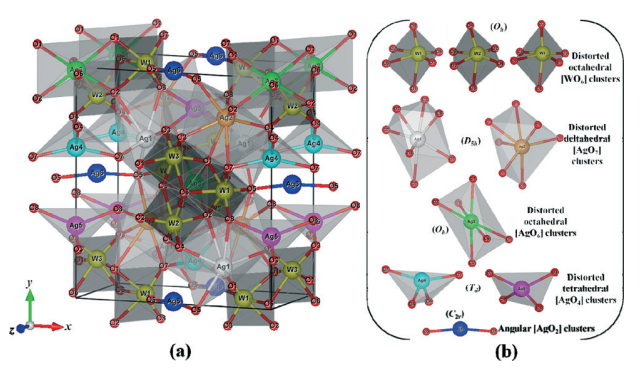
Facet-dependent photocatalytic and antibacterial properties of alpha-Ag2WO4 crystals: combining experimental data and theoretical insights
Abstract: In this paper, we have combined the various experimental results and first-principles calculations with a new and interesting discussion to explain the photocatalytic and antibacterial activities of alpha-Ag2WO4 crystals, which were obtained using the microwave-hydrothermal (MH) method with anionic surfactants. The advantages of the insights gained through the present work are two-fold. First, the mechanism and origin of the photocatalytic and antibacterial activities can be rationalized. Second, this facile and controllable synthetic method is expected to encourage the synthesis of complex metal oxides with specific active facets, and these insights can contribute to the rational design of new materials for multifunctional applications. X-ray diffraction and Rietveld refinement analysis confirmed that all the crystals have an orthorhombic structure without deleterious phases. Ultraviolet-visible diffuse reflectance spectroscopy indicated the presence of intermediary energy levels and a variation in the optical band gap values (3.09-3.14 eV) with the crystal growth process. The geometry, electronic properties of the bulk, and surface energies of these crystals were evaluated using first-principles quantum mechanical calculations based on the density functional theory. The crystal shapes was experimentally and theoretically modeled based on Rietveld refinement data, emission scanning electron microscopy images, and Wulff construction. To obtain a wide variety of crystal shapes, the morphologies were gradually varied by tuning the surface chemistry, i.e., the relative stability of the faceted crystals. The growth mechanisms of different alpha-Ag2WO4 crystals and their facet-dependent photocatalytic and antibacterial performances were explored in details. The combination of experimental and theoretical data revealed the presence of (110) and (011) planes with high surface energies together with the disappearance of faces related to the (010)/(0 (1) over bar0) planes in alpha-Ag2WO4 crystals are key factors that can rationalize both the photocatalytic and antibacterial activities. The different activities may be attributed to the different number of unsaturated superficial Ag and W atoms capable of forming the main active adsorption sites. Finally, we discuss how knowledge of surface-specific properties can be utilized to design a number of crystal morphologies that may offer improved performance in various applications.
Author (s): Roca, RA; Sczancoski, JC; Nogueira, IC; Fabbro, MT; Alves, HC; Gracia, L; Santos, LPS; de Sousa, CP; Andres, J; Luz, GE
CATALYSIS SCIENCE & TECHNOLOGY
Volume: 5 Pages: 4091-4107 Published: 2015
DOI: 10.1039/c5cy00331h




